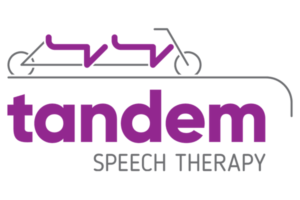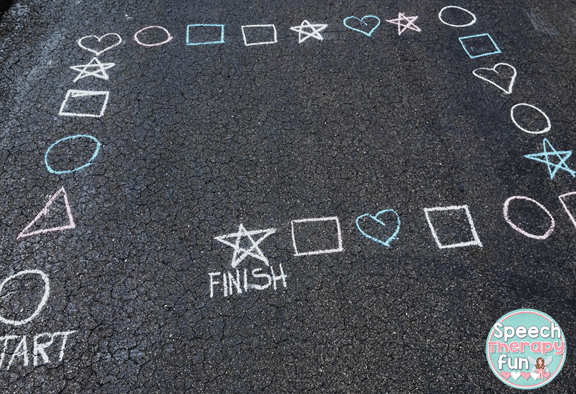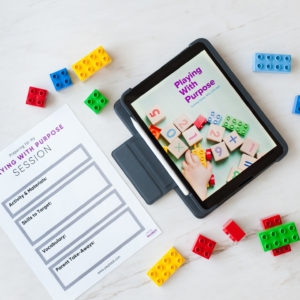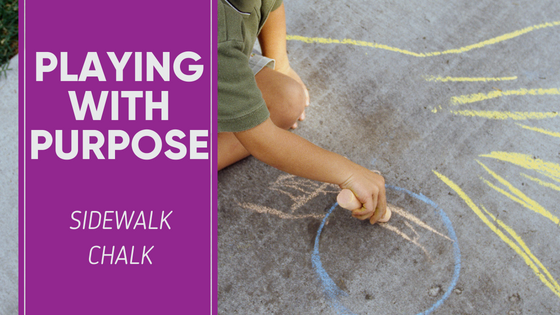
Sidewalk chalk is a fun activity to use for developing speech and language skills, and all you need are 2 items: a piece of clean pavement and some inexpensive sidewalk chalk. The movement and fresh air the kids get when being outside is not only a nice change of pace, but the break in routine can get our kids motivated and engaged. Plus, most of the time they will never know they are doing “work!”
Top 5 Tips for Playing With Purpose Using Sidewalk Chalk:
1. Draw a target and practice speech sounds. I got this idea and frankly the inspiration for this week’s blog post, from Sarah Lockhart, MS, CCC-SLP in Ashland, OR. Use your sidewalk chalk to draw a target or bullseye on the pavement. I drew mine with four circles. Inside the smallest circle I wrote 10, then 5, then 2 and a 1 in the largest, outer ring. Next, have your kiddo stand back and throw a ball, rock, coin, etc. at the target. If the rock lands in the ‘2’ circle then the child will say their sound two times. Adjust this for whatever level your child is at–word, phrases, sentences.
2. Play hopscotch and practice speech sounds. This is a variation on the tip from above and another great use of sidewalk chalk. Start by drawing a hopscotch board on the pavement. (FYI, if it’s rainy or not great outdoor weather where you are then you can do this inside with masking or painters tape on your floor.) Then use your sidewalk chalk to draw pictures of words that include your child’s target sound, write individual words, or write numbers in each space. Drawing pictures is an excellent way to use this activity for young children who are not reading. I write words for my older clients so they can read, and then even use their target word in a phrase or sentence. Both reading the words without a model and then formulating a sentence is an extra level of complexity that is a strategy to use with kids who are working on carryover. If you’re like me and have forgotten how to play hopscotch, then read this from Playing With Words 365.
5. Create people with your sidewalk chalk to work on pronouns and possessives. Take your sidewalk chalk and draw two stick people–one can be the girl, and the other can be the boy. If you are going to work on possessives, then draw items around each person and practice using sentences to describe the things each of them has. For example, “That is the girl’s cookie,” or “This is his radio.” If you are going to work on pronouns, then label one person with he and one person with she. We used each in a carrier phrase to match the clothing that we drew. For example, “She has a red shirt,” or “He has a purple hat.”
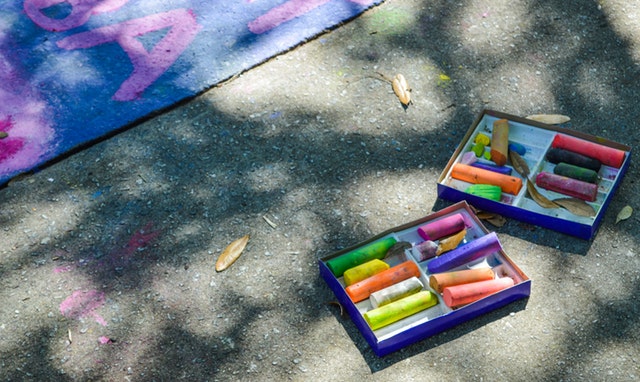
Now you are ready to hit the pavement and get creative in Playing With Purpose using sidewalk chalk. Remember movement and getting outside are fantastic catalysts for learning in our children. Have fun chalking it up with your kids and clients!
Want to learn more strategies like this for boosting language during play?
Start Playing With Purpose
Learn how to purposefully and intentionally interact with your child during play and help them increase opportunities for speech and language development with our Playing with Purpose book!
